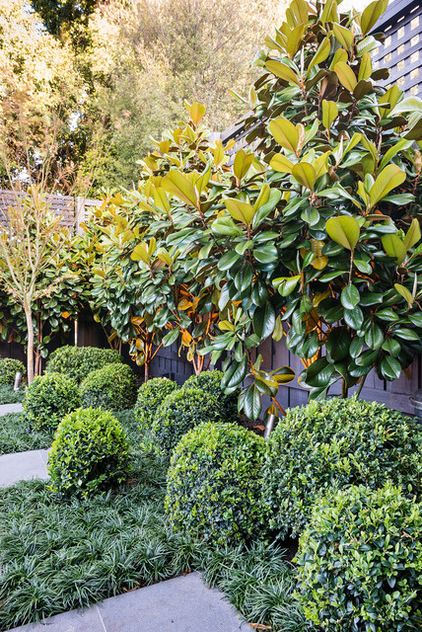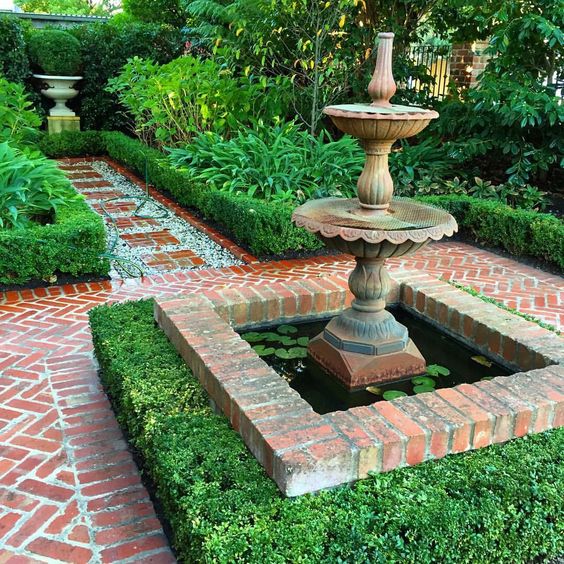The typical classic or formal garden first found its way to our shores through our English and European history. In Australia, they were first constructed only for the most impressive and prestigious properties. But using some simple rules, now anyone can have a classic formal garden. How you ask? Here are five key elements.

Choose classic plants
True classic gardens call for the use of classic plant species, most containing nothing more than lush green foliage, with white being the colour of choice for flowers. Gardenias, camellias, magnolias, star jasmine are just a few examples of classic planting options.
Highlight the formal shape of your garden using clever planting, drawing your eye along long rows of smartly trimmed trees, shrubs and hedges. Lining long stretches of path or driveway with upright features trees such as a Chinese juniper or Ornamental pears, which are a top choice for a classic garden. The consistent shape and formal structure make for a striking feature.
Plant in repetition
As mentioned earlier, mass planting of classic plant choices instantly creates a formal garden feel and repetition is the key. It instantly draws interest and it is a great way to give the impression of space. Keeping it simple using a consistent array planted in mass.
It is still important to get some variation between plant species. Look for different textures, colours or height. A perfect sense of structure will result from a well-thought-out design, so pay attention to the details.
Ornaments and formal features
Large features and ornaments are essential for use around the garden for focal points and to draw the eye. These focal points include elements such as statues, large urns, water features, archways, rotundas or even a large feature plant or tree.
Whichever you choose for a classic garden, don’t forget to add the often forgotten element of lighting. This will allow you to enjoy your classic feature both day and night.
Symmetry
In a well-executed formal garden, the symmetry of the space is a feature in itself. Getting the symmetry spot on is key, so spend time marking out garden beds and ensuring your features are evenly placed. Although repetitive planting creates lines in a classic garden, it is the continued maintenance with trimming that keeps those formal lines defined.
Garden and lawn edges
Well defined garden beds are essential. A key feature of a formal garden is neatly trimmed lawns and well mulched, heavily planted garden beds. Without well-defined edges, your garden will become unruly in no time, completely destroying your formal aspirations.
Using stone paver edging creates a solid break between the beds and lawn making sure one doesn’t overrun the other. When laying out your beds, once again think symmetry.
The final element, Water
Water can be a great feature in any garden styles. In classic gardens, water is best contained to a formal structure such as a pond or fountain. Water features don’t need to involve heavy earthworks and complicated pumping system. Fully contained water features with both a reservoir and pump within are easily installed and removed and when placed central to the design with symmetrical edging, are extremely effective. The beauty of water is that it adds an extra element to the design, it softens an area of sharp lines with its peaceful appearance and tranquil sounds.





